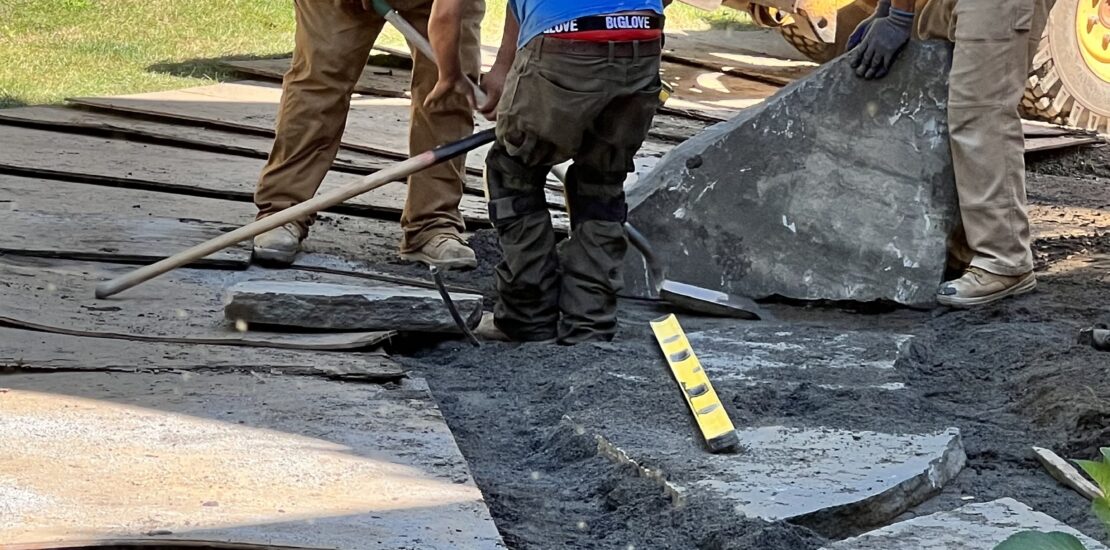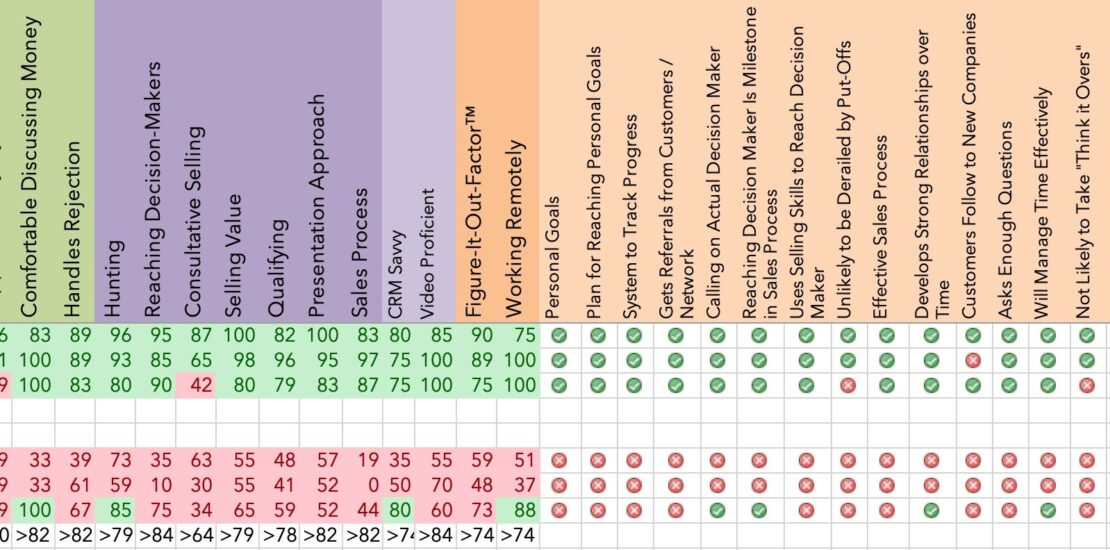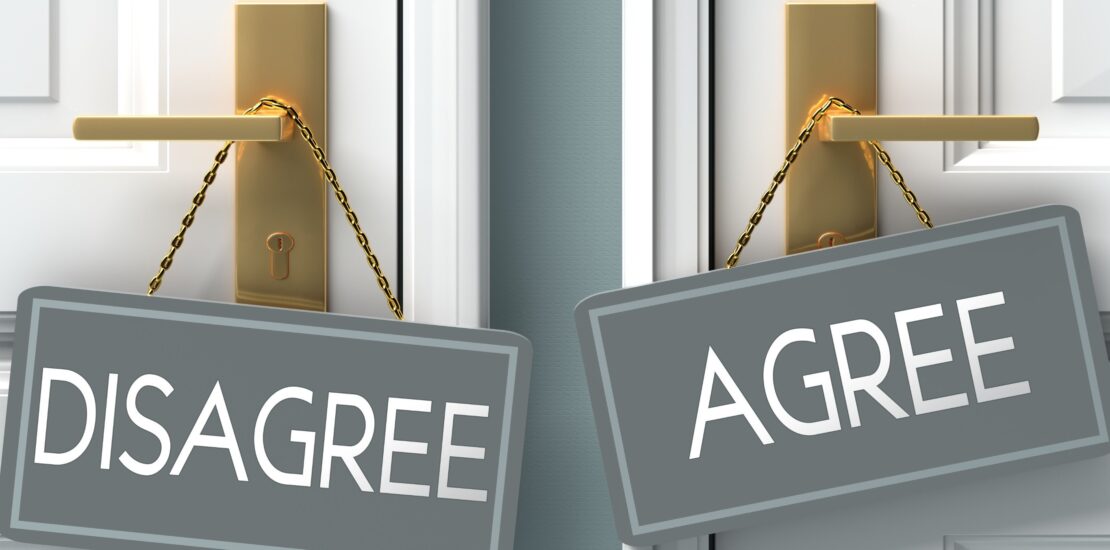reaching decision makers
-
Baseball, The Toad and Coaching Unresponsive Salespeople
- April 11, 2024
- Posted by: Dave Kurlan
- Category: Understanding the Sales Force

Coaching salespeople is challenging. When they aren’t responsive to coaching it’s not only more difficult, it is downright frustrating. When you’re attempting to coach unresponsive salespeople to use the phone to directly talk with a decision maker, there isn’t much upside. Whether you’ve made this coaching attempt one time or one hundred times, the outcome will be the same, so the question we should be asking is, should this salesperson still be working for you?
-
10 Unfavorable Selling Conditions That Prevent Sales Success
- March 25, 2024
- Posted by: Dave Kurlan
- Category: Understanding the Sales Force

When you encounter unfavorable selling conditions, refuse to accept them. This isn’t about moving forward with a couple of favorable conditions, it’s about NOT moving forward unless the conditions become more favorable. Whether or not you wish to admit it, the truth is that when the conditions don’t favor you, the business isn’t coming to you.
-
New Data: Top Salespeople are 7562% Better at Winning RFPs
- March 13, 2024
- Posted by: Dave Kurlan
- Category: Understanding the Sales Force

RFPs aren’t going away, and there are two ways that salespeople can approach them, the companies that write them, and the people associated with them:
Passively – in this capacity, they are nothing more than facilitators, waiting for an RFP to drop in their inbox, so they can get it off to the folks who write the proposals. When complete, they email the proposal back to procurement and hope to win.
Proactively – in this capacity, they regularly meet and develop relationships with the appropriate CxO’s and Sr VP’s of manufacturing, engineering, design, IT, IS, Finance, Marketing, HR, R&D, Operations, Facilities, Fulfillment, Distribution, Sales, Learning and Development, Enablement, and any other organizational head they might possibly sell to. They become a resource, an asset, a partner and not only help to write the specifications of the next RFP, but write the specs in such a way that they are the only company that can win the business.It seems obvious, doesn’t it? Option 1 is stupid and Option 2 is brilliant. But if option 2 is so brilliant and obvious, then why do so many salespeople become so defensive and dug in to option 1?
-
Opportunity Blindness – What’s in Your Sales Pipeline?
- February 28, 2024
- Posted by: Dave Kurlan
- Category: Understanding the Sales Force

Some observations:
The data represents the forecast and funnel for 7 sales teams.
The gaps (A & G) are backwards and should say 72% (A) and 41% (G).
The quarterly forecast (C) is 58% short of the quarterly target (D).
The current closable opportunities (B) are 77% short of the forecast (C) and 90% short of the quarterly target (D).
Add columns G and H and together, all of those columns represent pathetic, old news.The question that should be asked is, “What can we do about this?”
We should be able to answer that question by looking at column F but that’s not possible. Can you see why?
Outside of telling us that there isn’t enough in the funnel, the data in column F doesn’t answer the question that must always be asked: Is the pipeline viable?
We know the assigned value of the pipeline but we don’t know the answers to these additional ten important factors:
-
Three Recent Hurricanes Show the Path to More Effective Selling
- September 18, 2023
- Posted by: Dave Kurlan
- Category: Understanding the Sales Force

A great example of how much more successful salespeople are when they call on Decision Makers came from a salesperson who messaged me last week. Freddy was excited to talk about his recent success and I have changed his name and company names to protect his identity. Freddy wrote:
-
How Building a Stone Walkway Makes the Case for Sales Process
- August 16, 2023
- Posted by: Dave Kurlan
- Category: Understanding the Sales Force

We can learn a lot about what happens when you skip steps in a sales process by looking at the work this stone crew is doing.
-
My New Perspective on Sales Process and Methodology
- August 8, 2023
- Posted by: Dave Kurlan
- Category: Understanding the Sales Force

We were at the Zoo when we came upon the monkey in the picture. He was holding on to the chainlink fence with both hands and both feet – probably not very unusual for a monkey – but he was sitting on a basketball!
The monkey is following a traditional monkey methodology for hanging on, while being authentic, allowing his silly personality to come through, and getting people who were interacting with him to laugh.
We can even apply that approach to sales process and methodology!
-
These 6 Keys and New Data Help Your Sales Team Outperform The Rest
- February 16, 2023
- Posted by: Dave Kurlan
- Category: Understanding the Sales Force

They found that top performers make 54% more switches – the back and forth in conversations – than everyone else and 78% more in their presentations. The presentations made by top sales performers are not monologues!
-
This Company’s Best Salesperson was 2500% Stronger Than Their Worst
- February 1, 2023
- Posted by: Dave Kurlan
- Category: Understanding the Sales Force

It’s been four months since the baseball season ended but college baseball begins in less than 4 weeks and it will be fun to watch our son play for his college team (while freezing our asses off!). It’s also been a while since the last time I shared a top/bottom analysis but I completed one this week that I had to share.
-
The Wall Street Journal Shares News About What it Takes to Succeed in Sales
- November 14, 2022
- Posted by: Dave Kurlan
- Category: Understanding the Sales Force

I’m not anti-Wall Street Journal – at least I wasn’t. I haven’t written about their articles before. After all, they aren’t known for writing the kind of crap that the Harvard Business Review writes with regard to sales and selling.
While reviewing the article, I identified two themes – how much harder it is to sell today versus years ago and how millennials have adapted to changing times.

